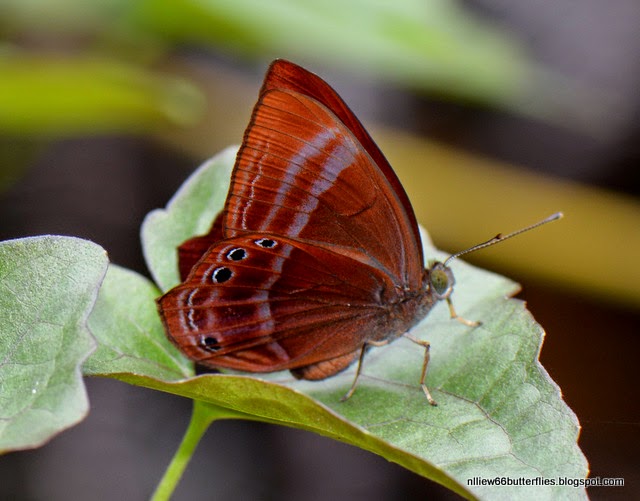Of all the species of Abisaras, this is the most readily recognisable by its dark saturated crimson uppers which are largely unmarked. The undersides has a pair of faint purplish post-discal bands which differentiate it from the others with white bands.
Habitat indicator
RSP
|
WV
|
PG
|
VF
|
FTR
|
SC
|
LWDF
|
LWPF
|
LMEF
|
UMN
|
MN
|
x
|
Frequency observation
chart: (S marks the usual occurences, H marks an unusually high occurence, F
for first record)
2014
|
2015
|
||||||||||||
Nov
|
Dec
|
Jan
|
Feb
|
Mac
|
Apr
|
May
|
June
|
Jul
|
Aug
|
Sep
|
Oct
|
Nov
|
Dec
|
S8
|
|||||||||||||
|
2016
|
|||||||||||
|
Jan
|
Feb
|
Mac
|
Apr
|
May
|
Jun
|
Jul
|
Aug
|
Sep
|
Oct
|
Nov
|
Dec
|
|
S3b
|
|
|
|
|
|
|
|
|
|
|
|
The Abisaras have the same habit of settling with wings half opened like all rionids.
Under flash, the dark crimson uppers have a bluish sheen at an angle.
Above photos 09 Jan 2015 @ 12:25 - 12:36








No comments:
Post a Comment